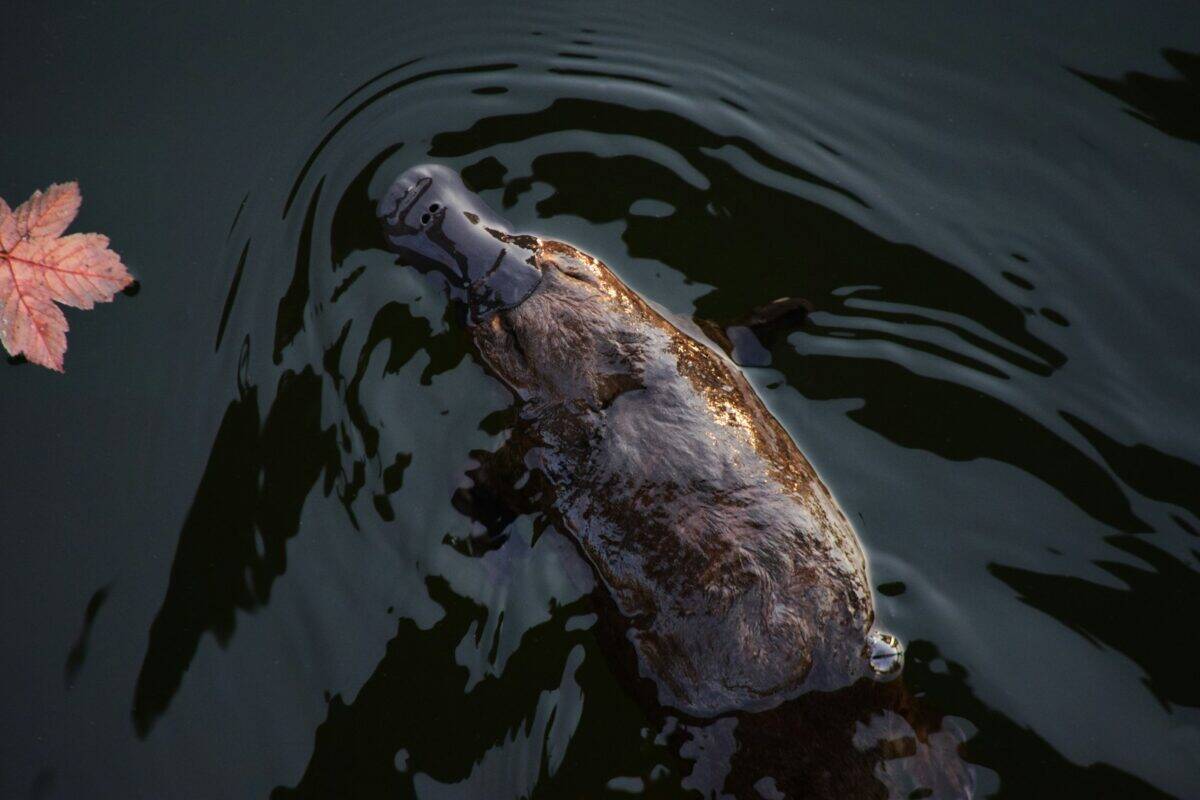The platypus stands as one of nature’s most peculiar anomalies – a mammal that defies classification by laying eggs rather than giving birth to live young. This semi-aquatic marvel, native exclusively to eastern Australia, combines features from seemingly disparate animal groups to create a creature so unusual that early European naturalists thought the first specimen was an elaborate hoax. With its duck-like bill, beaver-like tail, otter-like fur, and venomous spurs on males’ hind legs, the platypus (Ornithorhynchus anatinus) represents one of only five extant species of monotremes – the egg-laying mammals. In this article, we’ll explore the fascinating world of the platypus, from its extraordinary biological adaptations to the best locations for observing these elusive creatures in their natural habitat.
The Monotreme Mystery: Understanding Egg-Laying Mammals

Monotremes represent the most primitive group of mammals, having diverged from the mammalian lineage approximately 166 million years ago. Unlike placental and marsupial mammals, monotremes retain the reptilian characteristic of laying eggs while still possessing defining mammalian traits like fur, milk production, and warm-bloodedness (albeit at lower temperatures than other mammals). Currently, only five monotreme species exist: the platypus and four species of echidna (spiny anteaters). These living fossils provide scientists with crucial evolutionary insights into the transition from reptiles to mammals.
The platypus stands as the sole representative of its family, Ornithorhynchidae, and genus, Ornithorhynchus, which translates to “bird-snout” – a reference to its distinctive duck-like bill. This taxonomic isolation highlights just how unique the platypus is in evolutionary terms. When specimens were first sent to Europe in the late 18th century, many scientists dismissed them as taxonomic frauds stitched together from parts of different animals, demonstrating how the platypus challenged established biological classifications.
Platypus Anatomy: Nature’s Evolutionary Puzzle
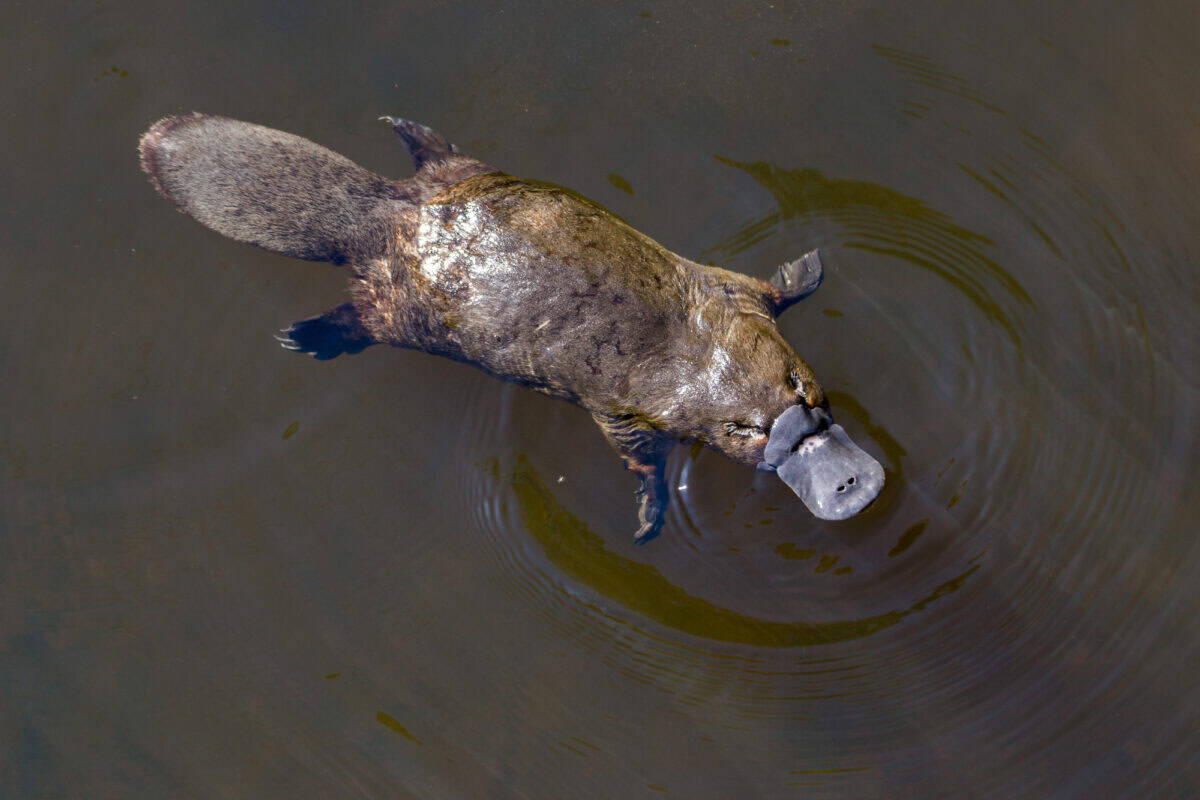
The platypus exhibits a remarkable combination of physical characteristics that make it one of nature’s most unusual creations. Adults typically measure 38-60 cm (15-24 inches) in total length and weigh between 0.7-2.4 kg (1.5-5.3 pounds), with males generally larger than females. Their bodies are streamlined and covered with dense, waterproof fur that provides excellent insulation in their aquatic environment. This fur appears brown on top with a silvery-gray underbelly, offering camouflage in their river habitats.
Most striking is the platypus’s bill – a soft, leathery snout that bears little resemblance to a bird’s beak despite superficial appearance. This sensitive organ contains thousands of electroreceptors and mechanoreceptors that detect electrical signals from prey and physical movements in water, effectively allowing the platypus to “see” with its bill while swimming with its eyes, ears, and nostrils closed. Behind the bill, the platypus has a streamlined head, short limbs with webbed feet for swimming, and a broad, flat tail that stores fat reserves and helps with steering underwater.
The Egg-Laying Process: Reproduction in Platypuses
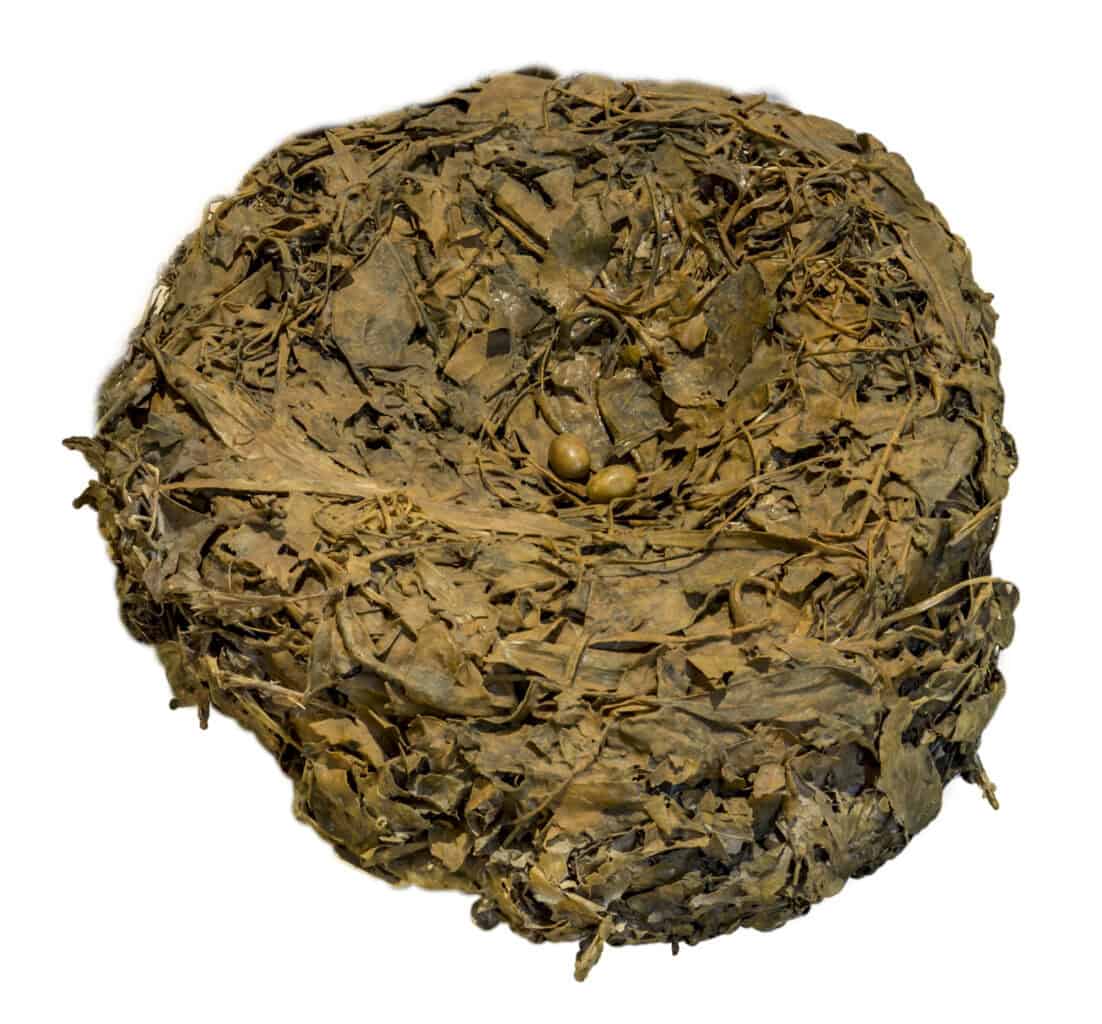
The platypus’s reproductive system represents one of its most extraordinary features. Female platypuses typically lay 1-3 small, leathery eggs (about 11mm in diameter) after a gestation period of approximately 21 days. Unlike birds’ eggs with hard shells, platypus eggs have a parchment-like covering more similar to reptile eggs. The female incubates these eggs by curling around them in a specially constructed burrow, maintaining body contact for the 10-12 day incubation period.
When the young hatch, they are altricial (helpless) and about 15mm long. Despite laying eggs, female platypuses produce milk to nourish their young. However, unlike other mammals, platypuses lack nipples. Instead, the milk is secreted through specialized skin patches on the mother’s abdomen, where the young lap it up directly. This nursing period lasts 3-4 months until the juveniles are ready to venture into the water. This combination of egg-laying and milk production represents an evolutionary middle ground between reptilian and mammalian reproductive strategies.
Venomous Defenses: The Platypus’s Secret Weapon

Adding to its list of unusual characteristics, the male platypus possesses venomous spurs on its hind ankles – making it one of the few venomous mammals in the world. These hollow spurs, connected to venom glands, deliver a powerful toxin capable of causing excruciating pain in humans and potentially killing smaller animals. The venom appears primarily designed for competition between males during breeding season rather than for predatory purposes or defense against predators.
Platypus venom contains a complex mixture of proteins, including defensin-like peptides not found in any other venomous animal. The pain it causes in humans is immediate and intense, poorly responsive to conventional painkillers, and can last for days or even months. While not lethal to humans, the venom can cause significant localized swelling and extreme pain. This venomous capability represents yet another example of the platypus’s evolutionary uniqueness, combining mammalian traits with defense mechanisms more commonly associated with reptiles.
Underwater Hunters: Feeding and Foraging Behavior
Platypuses are primarily nocturnal or crepuscular (active at dawn and dusk), spending up to 12 hours daily foraging for food in freshwater habitats. Their feeding behavior is as unique as their appearance. When hunting, platypuses dive to the river bottom, where they use their sensitive bills to detect prey through electrolocation – sensing the tiny electrical fields generated by the muscular contractions of small aquatic invertebrates. This remarkable ability compensates for their closed eyes, ears, and nostrils while underwater.
The platypus diet consists mainly of freshwater invertebrates, including insect larvae, worms, shrimp, and crayfish. Without teeth, they scoop up prey along with gravel and mud from the riverbed, storing it in cheek pouches. Upon surfacing, they use specialized grinding plates in their bills to crush food before swallowing. A typical platypus may consume up to 20% of its body weight daily, reflecting the high energy demands of maintaining body temperature in water and their active foraging lifestyle. Their feeding ecology makes them important indicators of freshwater ecosystem health.
Habitat and Distribution: Where Platypuses Live
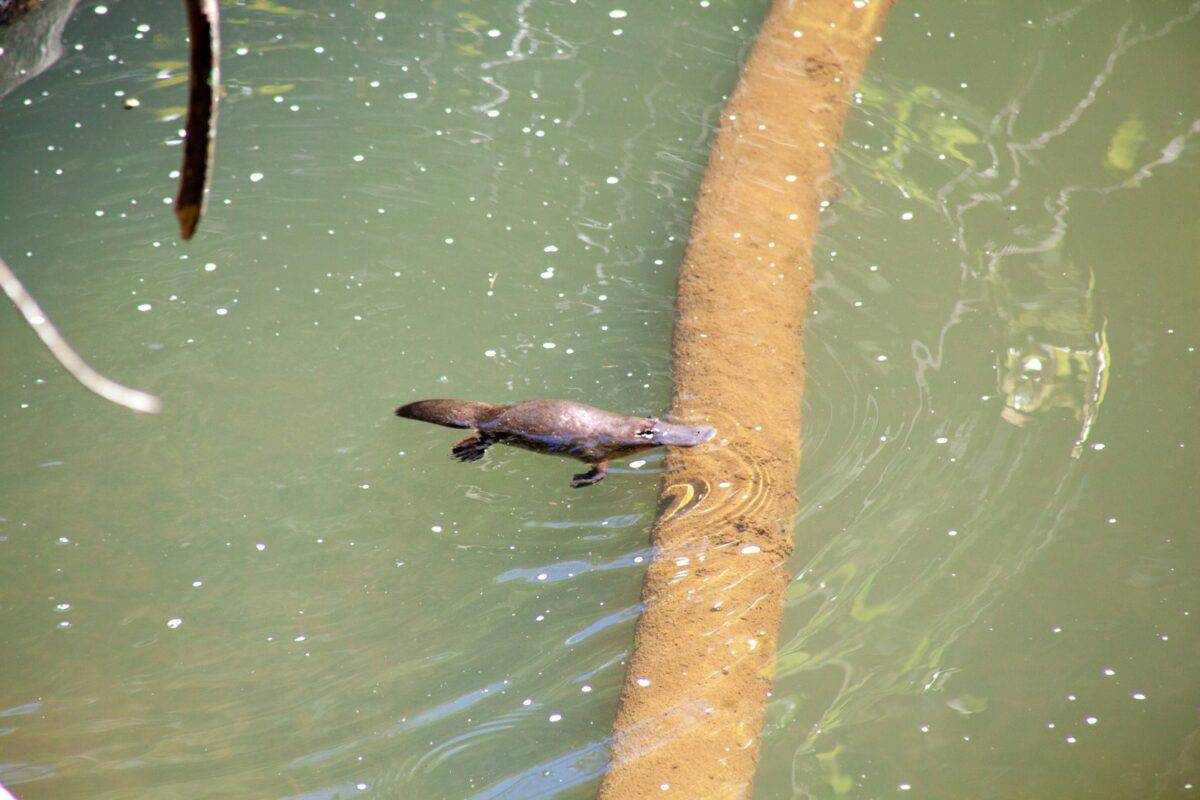
Platypuses are endemic to eastern Australia, with their range extending from the Cooktown region in north Queensland to Tasmania in the south, including eastern New South Wales and Victoria. They inhabit freshwater systems, including rivers, streams, and lakes with stable banks where they can construct burrows. Their preferred habitats feature areas of both fast-flowing water with rocky bottoms and pools with muddy substrates, providing diverse foraging opportunities.
Platypuses construct two main types of burrows: camping burrows for daily rest and nesting burrows for females raising young. These complex tunnels can extend up to 30 meters into riverbanks, with entrances typically located at or near the water level, often hidden by overhanging vegetation or roots. The specialized habitat requirements of platypuses make them particularly vulnerable to environmental changes affecting waterways, including drought, pollution, and habitat fragmentation caused by dam construction and urban development.
Conservation Status: Threats to Platypus Survival

While once widespread across eastern Australia, platypus populations face increasing pressures. The International Union for Conservation of Nature (IUCN) classified the platypus as “Near Threatened” in 2016, representing a deterioration from its previous “Least Concern” status. Recent research suggests population declines of over 30% in some regions over the past three decades, with localized extinctions occurring in areas where they were historically abundant.
Multiple threats jeopardize platypus survival. Habitat destruction through land clearing, dam construction, and waterway modification disrupts their breeding and feeding grounds. Water pollution from agricultural runoff, mining, and urban waste degrades water quality. Introduced predators like foxes and feral cats prey on platypuses when they move overland. Climate change poses perhaps the most significant long-term threat, as increasing frequency and severity of droughts reduce water availability in their habitats. Conservation efforts include habitat restoration, predator control programs, and research to better understand population dynamics and habitat requirements.
Platypus Watching: Best Locations in Australia

For wildlife enthusiasts hoping to glimpse these elusive creatures in their natural habitat, several locations across eastern Australia offer reliable platypus viewing opportunities. The Broken River viewing platform in Eungella National Park, Queensland, stands as one of the most accessible and reliable platypus viewing sites. This rainforest-fringed river provides excellent morning and late afternoon sightings, with platypuses regularly seen foraging in the pools below the purpose-built viewing platforms.
Tasmania offers numerous platypus viewing opportunities, with the Warrawee Forest Reserve near Latrobe particularly notable. This dedicated platypus sanctuary features guided walks and viewing platforms overlooking calm pools where platypuses regularly feed. In Victoria, the Platypus Reserve at Healesville Sanctuary provides guaranteed viewing of platypuses in a naturalistic setting, while wild platypuses can often be spotted in the Yarra River at Warburton. New South Wales offers good viewing opportunities at the Blue Mountains National Park’s Jenolan Caves precinct and Bombala Platypus Reserve, where dawn and dusk visits maximize chances of sightings.
Viewing Tips: How to Spot the Elusive Platypus
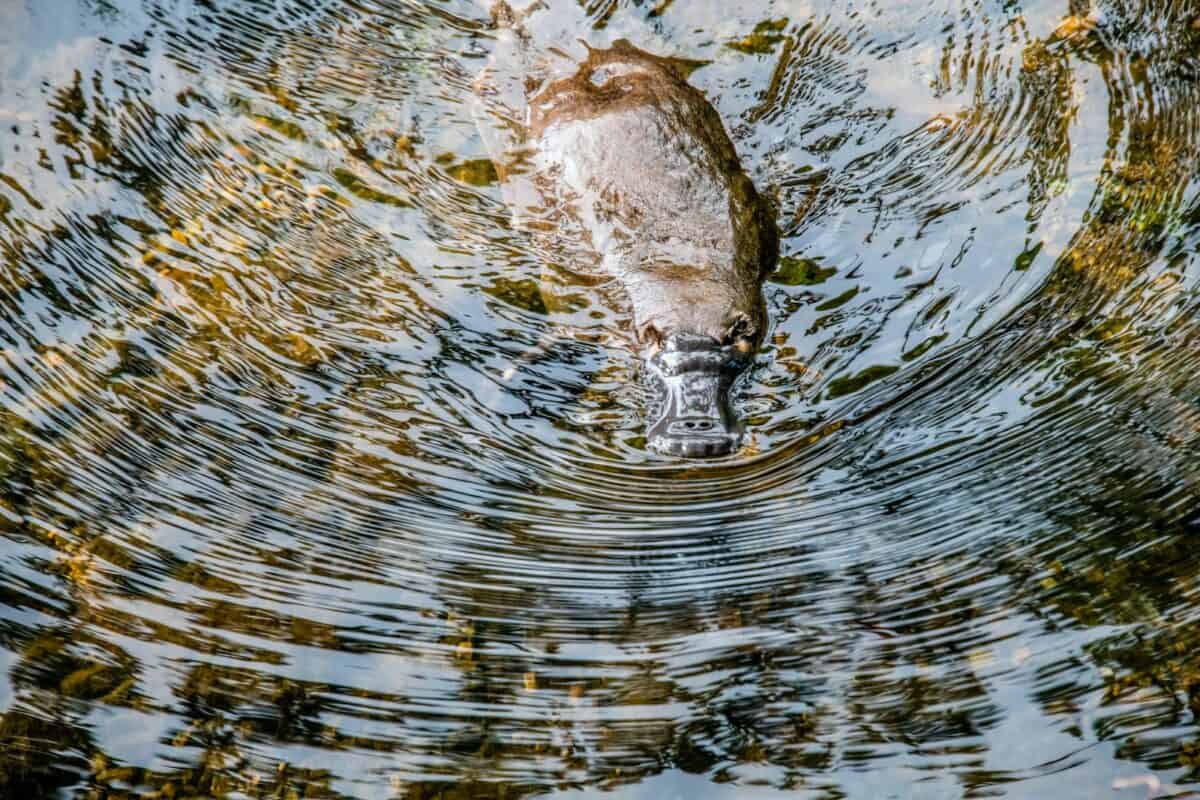
Observing platypuses in the wild requires patience, timing, and proper technique. The best viewing times are typically early morning (dawn to 9 AM) and late afternoon (4 PM to dusk) when platypuses are most active. Look for ripples on the water’s surface forming a V-shape, or bubbles appearing in clusters when a platypus dives. When they surface, only a small portion of their head and back may be visible before they dive again, typically staying underwater for 30-140 seconds before resurfacing.
To maximize viewing success, move slowly and quietly, as platypuses are easily startled by noise and movement. Wear neutral colors that blend with the environment, and consider using binoculars for better viewing without approaching too closely. Position yourself downwind if possible, as platypuses have a keen sense of smell. Avoid using flash photography, which can disturb these sensitive animals. Responsible viewing practices help ensure these shy creatures continue their natural behaviors and remain accessible for future observers.
Platypuses in Captivity: Zoos and Wildlife Centers
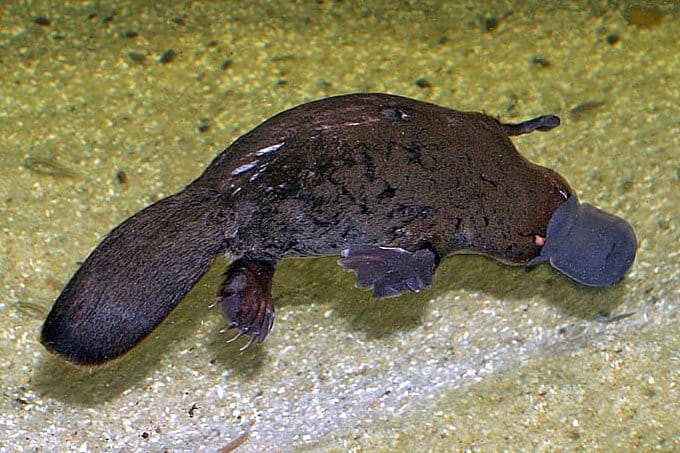
For those unable to visit wild habitats or seeking guaranteed sightings, several Australian zoos and wildlife sanctuaries maintain platypus exhibits. Healesville Sanctuary near Melbourne pioneered platypus husbandry and features an award-winning platypus exhibit called “Platypus House,” where visitors can observe these animals swimming and foraging in a naturalistic environment. Taronga Zoo in Sydney, Wildlife Sydney Zoo, and SEA LIFE Sydney Aquarium all maintain excellent platypus exhibits with underwater viewing areas that allow observation of their swimming and foraging behaviors.
Outside Australia, only the San Diego Zoo in California has successfully housed platypuses historically, though they no longer maintain this exhibit. The specialized requirements for platypus captivity, including water quality, temperature control, complex habitat design, and specialized diet, make them exceptionally challenging to maintain outside their native range. Australian wildlife parks with platypus exhibits often participate in research and conservation programs, contributing to scientific understanding while providing educational opportunities for visitors to learn about these remarkable mammals.
Cultural Significance: The Platypus in Aboriginal and Modern Australian Culture

For Indigenous Australian cultures, particularly those in eastern Australia where platypuses occur naturally, these unique animals feature prominently in Dreamtime stories and traditional knowledge. Various Aboriginal groups have distinct creation stories featuring the platypus, often explaining its unusual appearance as the result of interactions between different animal groups. In some traditions, the platypus represents a mediator between water and land animals, reflecting its amphibious lifestyle.
In contemporary Australian culture, the platypus has become an iconic national symbol, appearing on the 20-cent coin, as mascots for sporting teams, and in tourism marketing. Its distinctive appearance makes it instantly recognizable worldwide as quintessentially Australian. The platypus has featured in children’s literature, documentary films, and as inspiration for fictional characters. Perhaps most famously, the platypus inspired the character “Perry the Platypus” in the animated series “Phineas and Ferb,” introducing this unique mammal to global audiences. This cultural significance has helped raise awareness about platypus conservation and the protection of Australian wildlife.
The platypus represents one of nature’s most extraordinary evolutionary experiments – a living reminder of the transitional period between reptiles and mammals that occurred millions of years ago. As the only mammal that lays eggs besides the echidna, the platypus provides scientists with invaluable insights into mammalian evolution while delighting wildlife enthusiasts with its peculiar appearance and behaviors. The combination of duck-like bill, beaver-like tail, otter-like fur, venomous spurs, electroreception abilities, and egg-laying reproduction makes the platypus a true biological mosaic that continues to fascinate researchers and nature lovers alike.
For those fortunate enough to witness a platypus in its natural habitat – whether at viewing platforms in Queensland’s Eungella National Park, Tasmania’s serene rivers, or specialized exhibits in Australian wildlife sanctuaries – the experience offers a rare glimpse into an ancient mammalian lineage that has survived since the time of dinosaurs. As climate change and habitat degradation increasingly threaten platypus populations, conservation efforts become ever more crucial to ensure future generations can marvel at this evolutionary oddity. The platypus reminds us that nature’s diversity often exceeds our imagination, encouraging continued protection of Earth’s unique and irreplaceable wildlife treasures.
- The Coldest Town in America—And How People Survive There - August 9, 2025
- How Some Birds “Steal” Parenting Duties From Others - August 9, 2025
- 12 Deep-Sea Creatures You Won’t Believe Exist - August 9, 2025

